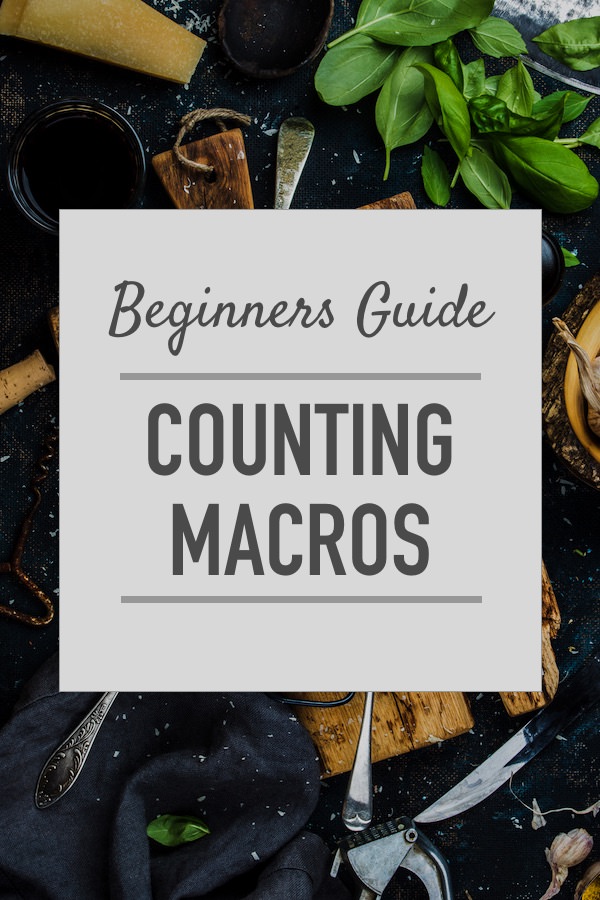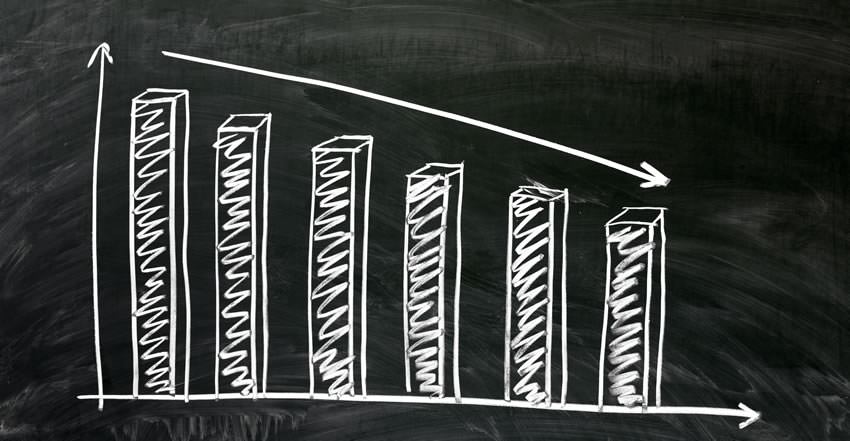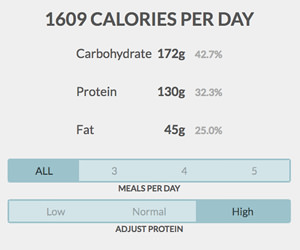
There is a science to losing fat and/or body mass and counting macros is a great way to put that science into action.
The science is based on calculating how much energy your body requires to maintain itself. If a person eats less than this amount, weight loss will occur. Since all energy is derived from the macros you eat, counting them is the perfect way to track your food consumption and put yourself in a safe calorie deficit that won’t cause you to feel starved like other popular diets do.

What are Macros?
The term “macros” is an abbreviation of the word Macronutrients.
There are three macronutrients and this is where calories (food energy) comes from.
- Carbohydrates: yield 4 calories (kilocalories) per gram
- Protein: yields 4 calories (kilocalories) per gram
- Fat: 9 yields calories (kilocalories) per gram
Note: Some types of alcohol also provide energy and this is factored at 7 calories per gram of alcohol.
Establishing Your Baseline
Before you can figure out what your weight loss macros will be, you have to estimate how many calories your body uses each day to maintain its current weight. This comes from your basic metabolism and amount of activity and is known as your TDEE.
There are many tools to help with this and our macro calculator makes it pretty simple.
As an example, let’s use a woman who is 36 years old, weighs 130 pounds and is 5’6″. She burns about 400 calories through exercise each day and is classified as “moderately active”.
By entering that info into our calculator, we find out that it is estimated that she requires 2011 calories to maintain her current weight.

By counting macros (not just calories) she can be sure she is eating enough of the three macros in order to maintain muscle mass and a healthy physiology.
1. Fat Macro
A good fat ratio to aim for is 25-30% of your daily calories.
Therefore this woman should eat 56 grams (25%) of fat. She counts and keeps track of the fat macro in the foods she eats and stops eating fat when she reaches 56 grams.
2. Protein Macro
A good protein amount is .65-1.0 gram of protein per pound of body weight. This depends on a few factors such as the type of exercise engaged in, amount of fat tissue weight, amount of lean mass, and overall fitness goal.
Since this woman is moderately active and engaged in weight training, we’ll use 1 gram per pound which means that she should eat 130 grams of protein per day. Again, this involves counting protein grams in the food she eats and stopping when she reaches 130 grams.
3. Carb Macro
The remainder of her calories should come from carbohydrates.
In our example, this is 49% of her calories or 247 grams. She would track the grams of carbs she is eating and stop when she reaches 247 for that day.
Note: People who are wanting to count macros but have engaged in low carb diets in the past, may be freaked out by the number of carbs. But, this is exactly the restrictive type of dieting counting macros seeks to break people free from. Carbs do not make you fat or keep you from losing weight as long as you are eating them in context with how much energy your body requires on a given day.

Counting Macros to Lose Weight
The science of weight loss is simple in theory. Eat fewer calories than your body requires and you’ll lose weight. In reality, it’s a bit more complicated if you want to do it in a way that is sustainable long-term.
For instance:
- Eating too few calories for too long can actually stall weight loss.
- Not eating enough of the protein macro can cause muscle tissue to break down instead of fat tissue.
- Eating a fixed low-calorie amount (such as 1200 calories each day) doesn’t take into account the calories you burn according to your unique stats and activity.
Flexible Dieting: No more than 20% Deficit
Flexible Dieting (the diet philosophy in which counting macros falls under) seeks to place the dieter in a safe calorie deficit of no more than 20% of their Total Daily Energy Expenditure (TDEE). Thus, producing slow and steady progress of 1-2 pounds a week on average.
When counting macros for weight loss, a person must first deduct 20% from the calories required to maintain their current weight.
Using the woman in our example above, 20% fewer calories than her maintenance TDEE of 2011 is 1609 calories and by eating at this amount she should start losing weight.

She would then use the above-described calculations to determine her weight loss macros which the calculator has done already.
- Protein: 130 g
- Fat: 45 g
- Carbs: 172 g
She would then count her macros in the food she eats and stop eating when she gets to her target amounts each day.
Note: For some people, these calculations may not be as accurate as they should be.
For people with a lot of weight to lose, I recommend custom macro calculations to ensure you get off to a great start. The formula used in the calculator over-estimates macros for those with 50+ pounds to lose and some additional calculations are needed.

Tools That Make Counting Macros Easy
The most challenging aspects of counting macros is understanding the how the system works and tracking food intake.
Luckily there are several tools that make the process so much easier.
- The Macro Solution
This ebook guides you through the process step-by-step and teaches you to be an expert macro counter. - Tracking Apps
Tracking macros is a lot easier with the use of an app or website. For beginners, we recommend My Food Diary. More complex apps include Cronometer, MyFitnessPal, and MyMacros+ - A Food Scale
An inexpensive food scale is also needed to accurately measure portions of fresh food. As macro amounts are determined by the quantity of food, it’s important that portions are being measured correctly for the best results.
Practice Makes Perfect
Like most things in life, counting your macros takes some practice. You shouldn’t get frustrated if in the first week you are off by 5-10 grams on some of your macro goals.
As you discover which foods work and which portion sizes are best, you’ll begin to get closer to macro counting accuracy. Just be patient – it gets easier!
Some people think that they will have to count their macros for the rest of their life.
However, this isn’t true.
After six months to a year of counting, most people know intuitively how much to eat and counting will no longer be necessary.
From time to time it’s helpful to do a short “check” of your eating habits by resuming macro counting. However, most people will have successfully reprogrammed their eating habits for good.
You'll Love Our Macro Solution Program
Step-by-step ebooks, or fully customized personal macros coaching. Let us help you succeed with counting macros!



- References:
- Rising, R., Harper, I. T., Fontvielle, A. M., Ferraro, R. T., Spraul, M., & Ravussin, E. (1994). Determinants of total daily energy expenditure: variability in physical activity. The American journal of clinical nutrition, 59(4), 800-804. Study Link
- Prentice, A.M., Goldberg, G.R., Jebb, S.A., Black, A.E., Murgatroyd, P.R. and Diaz, E. 0. (2007) ‘Physiological Responses to Slimming’,Proceedings of the Nutrition Society, 50(2), pp. 441–458. doi: 10.1079/PNS19910055. Study Link
- Mettler, S. Protein for Weight Loss. Study Link
Original article and pictures take healthyeater.com site
Комментариев нет:
Отправить комментарий